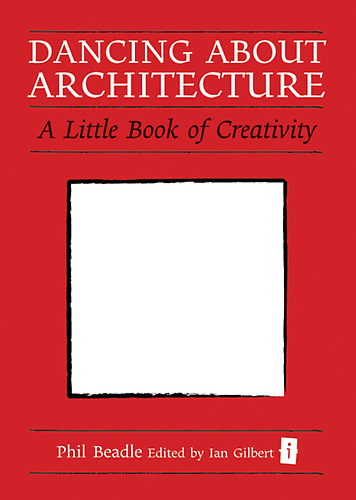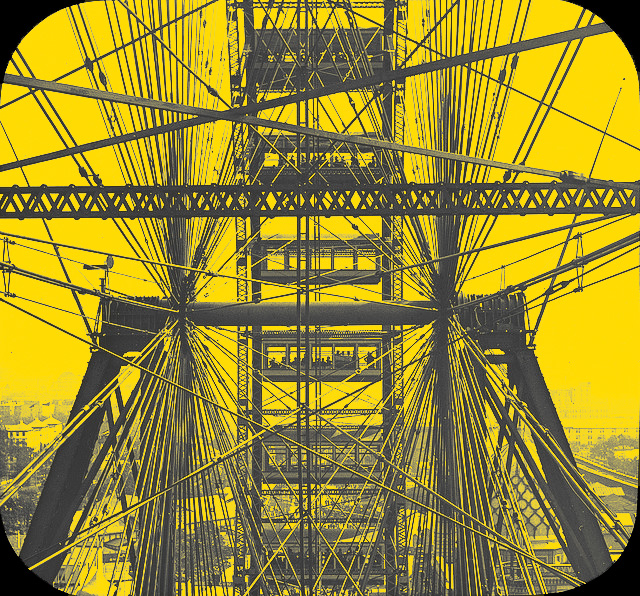
Milano Duomo
Home to "The Last Supper"
***
by Maria Popova
“It is the ability to spot the potential in the product of connecting things that don’t ordinarily go together that marks out the person who is truly creative.”
 It seems endemic to the human condition that we’ll never cease longing for insight into where good ideas come from, how creativity works, itssecrets, its origins, and the five-step action planfor making it manifest. Dancing About Architecture: A Little Book of Creativity by Phil Beadle is unusual in that it’s both a strong, pointed conceptual vision for the nature and origin of creativity, and a kind of activity book for grown-ups that invites you to learn how to implement the skill set of creativity through a series of hands-on exercises applicable wherever your creative journey may take you, from the studio to the classroom to the boardroom.
It seems endemic to the human condition that we’ll never cease longing for insight into where good ideas come from, how creativity works, itssecrets, its origins, and the five-step action planfor making it manifest. Dancing About Architecture: A Little Book of Creativity by Phil Beadle is unusual in that it’s both a strong, pointed conceptual vision for the nature and origin of creativity, and a kind of activity book for grown-ups that invites you to learn how to implement the skill set of creativity through a series of hands-on exercises applicable wherever your creative journey may take you, from the studio to the classroom to the boardroom.
Much of Beadle’s insights echo Sir Ken Robinson’s work, but Beadle emphasizes another, in my opinion far more important, aspect of creativity: itscombinatorial nature:
We create the new not generally through some mad moment of inspiration in fictionalized accounts of ancient Greeks in baths (though the conditions for this can be forced into existence), but by putting things together that do not normally go together; from taking disciplines (or curriculum areas) and seeing what happens when they are forced into unanticipated collision.[…]The mind, at its best, is a pattern-making machine, engaged in a perpetual attempt to impose order on to chaos; making links between disparate entities or ideas in order to better understand either or both. It is the ability to spot the potential in the product of connecting things that don’t ordinarily go together that marks out the person (or teacher) who is truly creative.
This point resonates deeply with the founding philosophy of Brain Pickings, and is one articulated by a great many thinkers and creators. Steve Jobs famously said that “creativity is just connecting things”; Paula Scher spoke of the mental collaging that sparks a moment of creation; As Austin Kleon put it, “you are a mashup of what you let into your life”; William Gibson called for cultivating “a personal micro-culture”; Paul Rand maintained that the role of the imagination is “to create new meanings and to discover connections that, even if obvious, seem to escape detection.”

The entire article is at http://www.brainpickings.org/index.php/2013/03/18/century-of-the-child-moma-book/Nature abhors a vacuum and the same applies in your head. The trouble is, if there’s nothing to replace the gap left behind when you clear out all your old rubbish then some new rubbish will come along to fill it… So, where do the new ideas come from to fill the void left by eliminating your old ones? This question of the derivation of ideas was one that was approached by an advertising man called James Webb Young in 1939. His short book, A Technique for Producing Ideas, became the seminal book on how to get ideas, good ones, into your head… Webb Young suggests the following five-step plan to generating great ideas:[1] Gather the raw material[2] Digest the material[3] Don’t think[4] Wait for the ‘Ah ha!’ moment to appear (and be ready when it does. Keep a notebook by your bed)[5] Expose your idea to the light of day and see if it stands up to the glarePart of the first step that we often overlook, however, is the need to feed our brains with all sorts of ‘raw material’ and not just the sort most related to our work. If all you do, as an educator, is read education books then you will never be very creative. You will never succeed in doing what Steve Jobs […] calls making a ‘dent in the universe’. Genuine creativity needs a collision of ideas, something that will never happen if all your thoughts travel in the same direction. Arthur Koestler in his seminal book on creativity,The Act of Creation, talks about ‘bisociation’. An idea travels in one direction and then suddenly is broadsided by another traveling in a different one. It is used in humor all the time. What’s blue and white and climbs trees? A fridge in a denim jacket. That sort of thing.
Dancing About Architecture goes on to explore, both in practical terms and as a broader cultural vision, how we can foster this combinatorial capacity in our individual creative journeys as well as in formal social frameworks like the education system and the workplace.

No comments:
Post a Comment